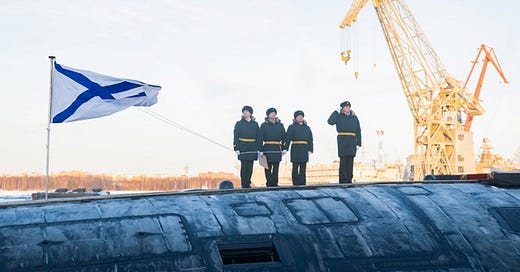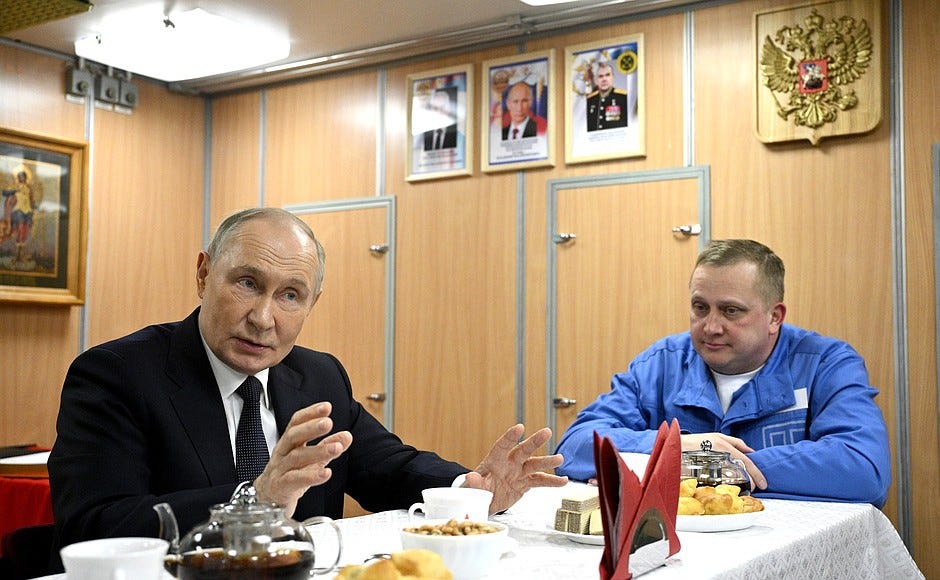The Russian Navy Will Build 24-Percent Fewer Submarines
Russian President Vladimir Putin sneakily announced a submarine reduction
As recently as 2018, the Kremlin planned to remake the Russian navy’s submarine fleet with as many as 14 new Borei-class ballistic missile submarines and 12 Yasen-M-class attack submarines, both nuclear-powered.
That was before COVID—and before Russia’s wider war in Ukraine brought down damaging foreign sanctions on Russian industry and diverted precious resources to the bloody scrap heap that is the front line of that 37-month war.
The new plan is for the navy to get just three more Boreis and five more Yasens for a total of 10 each. Twenty new subs instead of 26—a 24-percent reduction.
Russian president Vladimir Putin announced the reduction without really announcing it, by heaping praise on Russian shipbuilding Sevmash during the March 27 launch of the 13,800-ton Yasen-M-class boat Perm.
“You and I have witnessed launch of the fifth vessel Yasen-M,” Putin said. “It is planned to build five more such ships and plus three more Borei ships.” But Putin failed to mention that eight more boats represents a reduction of six boats compared to previous plans.
Russia isn’t the only country struggling to build submarines as the 2020 pandemic’s labor convulsions continue to rattle high-tech industries.
The U.S. Navy is trying to grow its fleet of attack and cruise-missile boats from 53 today to a new objective of 66, but is frustrated with boats consistently delivering years late. A dozen new ballistic-missile submarines are replacing 14 existing boomers, but they likewise are late.
The Russian fleet has around 25 nuclear-powered attack and cruise-missile boats, 16 nuclear boomers and 21 diesel-electric attack boats. Unless Sevmash can pivot to construction of new sub classes, and soon, the navy could be in for a sharp reduction in overall hull numbers in the coming years as too few new boats commission to replace older boats whose hulls have worn out.
Read more:
Deploying More Anti-Ship Missiles Toward Taiwan, Japan Closes a Key Maritime Chokepoint for China
The Japanese army formally activated its 8th Surface-to-Ship Missile Regiment in Oita in southern Japan late last month. The activation completes Tokyo’s long-term plan, formulated a decade ago, to establish a veritable wall of surface-to-surface missiles between southern Japan and China, and northern Japan and Russia.







